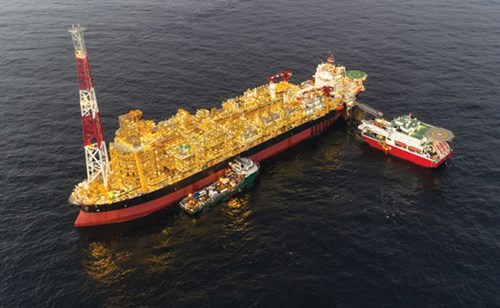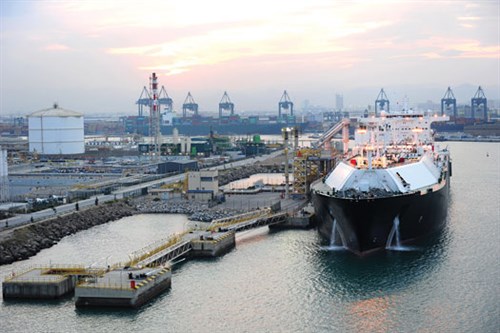LNG today: Meeting changing infrastructure requirements
The growing global climate crisis is necessitating the search and need for cleaner energy choices. Changing market dynamics are driving evolution and growth within several sub segments such as LNG.
The need to meet sustainability goals in more mature global markets is accelerating infrastructure changes. As LNG applications evolve, facilities must adapt innovative infrastructure and vessels to ensure they continue to operate in a safe, efficient, cost-effective and timely manner. As the transition toward a net-zero economy gains momentum and LNG becomes increasingly cost competitive, the demand for LNG and its related infrastructure will only increase.
The evolution of LNG applications. Operators are improving infrastructure by upgrading jetties to support larger vessel types, using floating units as semi-permanent storage structures, with onboard liquid-to-gas conversion (e.g., FSRU) or using ship-to-ship transfers more regularly to meet demand. However, if paired with existing infrastructure that is no longer fit for purpose, all these potential solutions will impact efficiency and—more importantly—safety.
One-way foresighted ports and terminals are reducing disruption is by adding or modifying their facilities to offer LNG bunkering services gradually over time. Many of these shore-based facilities are in regions with tighter emissions control regulations and close to LNG import terminals for efficient distribution.
However, due to its low capital investment and the limited infrastructure required, truck-to-ship is one of the most widely used configuration at terminals and ports today for LNG. This method does have its drawbacks; among other factors, it requires multiple vehicles, ultimately limiting bunkering operations to smaller-sized LNG-fueled vessels.
Alternative options—such as ship-to-ship and terminal shore-to-ship transfers—support larger storage capacity and higher bunkering rates, but both methods require significantly higher capital investments for bunker vessels and fixed infrastructure, such as storage tanks, specialized loading arms and flexible hoses.
As LNG applications evolve, infrastructure and operations must evolve to be more flexible to avoid implications on efficiency and safety. For example, LNG bunker vessels must be able to both visit large terminals and provide transfers to LNG-fueled ships via ship-to-ship.
Infrastructure development and the LNG supply chain. LNG fueling is becoming an alternative for shipping lines wishing to reduce their carbon footprint with immediate impact. Using LNG helps lessen carbon dioxide (CO2), nitric oxide (NOx) and sulfur oxide (SOx) emissions and has contributed to the development of new markets within the LNG industry, initiating unprecedented levels of ship and bunker vessel building and new gas train construction.
The new global limit of 0.5% of sulfur content in marine fuels—enforced by the International Maritime Organization (IMO) in January 2020—is poised to incentivize the investment in LNG. This stricter cap on marine bunker fuel is spurring the installation of new machinery (or conversion where possible) designed to operate on LNG, as well as the construction of related infrastructure to accommodate the switch to LNG-fueled vessels. This standard is creating a self-reinforcing feedback loop, where the development of an efficient, secure, and competitive LNG supply chain and related bunkering infrastructure drives further adoption of LNG-fueled vessels.
The LNG supply chain is a carbon-intensive process. Uptake in gas demand will be met by LNG in many countries without domestic gas production or pipeline gas from nearby countries. By its very nature, the LNG supply chain spans the globe and involves different industry processes. However, the emissions from LNG have been considered on a more segmented basis. With the growth of the LNG fueling market, there is an increased focus on the lifecycle emissions of the whole LNG supply chain—from ‘well-to-wake’ emissions to final combustion.1
Projects attracting investment. LNG is a global commodity, with 21 countries exporting to 42 importers. The bunkering infrastructure to support LNG as a marine fuel continues to snowball.
Investment in LNG infrastructure has grown with 124 ports now providing LNG bunkering facilities.2 In early 2019, there were just six LNG bunkering vessels in operation; five in Europe and one in North America. As of July 2020, the number has more than doubled, growing to 13 in service, with a further 28 on order and/or undergoing commissioning.1
With 120 LNG-powered ships in service around the world, and another 130 on order3, an increasing number of bunkering facilities are gearing up to support the demand for LNG as a fuel into the future.
Flexible LNG solutions and improving interface management. Across international markets, LNG is traded as a commodity. In international shipping, it is used as a fuel. Each market requires flexible solutions to ensure safety, efficiency, cost effectiveness and, ultimately, the success of the business model—from ship-shore links for FSRUs to hybrid-GEN3 solutions for bunker vessels. New projects must find a fast return on investment (ROI), while established facilities must keep pace with changing demands.
Given the global scope and myriad applications of the LNG industry, diversity is the norm. From traditional terminals to bunker barges and everything in between, project requirements vary substantially, inviting varied solutions and complicating interface management at transfer touchpoints. Optimizing the interface at the various stages of the LNG supply chain is critical to supporting the business model of every transfer operation. Interface optimization means consistent communication and standardized processes at every transfer point.
Efficient equipment delivers flexibility. Adopting easily configurable and compatible equipment systems delivers several benefits, such as an enhanced overview of operations, improved productivity, reliability and safety, and a faster ROI for all stakeholders. Efficient systems that offer these benefits can provide support to LNG operators that require operational flexibility to adapt to spot contracts.
Conversely, fragmentation creates inefficiencies and safety issues and reduces the opportunity to implement flexible business models. A standardized approach across facilities opens opportunities for all stakeholders through common requirements and systems. Standardization of systems improves operational control. At the same time, data sharing between parties is enhanced, enabling effective communications, fast response to potential issues and empowered long-term decision-making.
To support an international shipping network fueled by LNG requires a robust system architecture design at the outset. In turn, this requires oversight between stakeholders and an understanding of cross-party requirements.
The role of specifications. Every port and terminal are unique. It is important to identify the correct specifications needed at the early stages of a project to ensure long-term performance and the safety of the project. The ability to understand materials and applications plays a large part in optimizing safety and performance and ensuring the right solution for the job.
At the same time, products must meet differing regulatory requirements globally, and suppliers must understand and integrate all necessary standards into their solution. They must be prepared to provide first-class 24/7 support when it is needed to ensure downtime is minimized.
Looking ahead. Demand for cleaner fuels is set to propel LNG fueling into a mature market phase, where spot contracts are utilized, rather than solely long-term contracts. In addition to developing economies driving new applications and markets, the global LNG infrastructure market is expected to witness significant growth in the near future.
However, LNG infrastructure must be able to keep up with demand. Accelerating LNG fueling to meet sustainability demands requires LNG infrastructure that can cope with demand by berthing more LNG-powered vessels safely and efficiently.
To respond to LNG’s various challenges and opportunities, LNG leaders must adapt to the needs of different business models, changing environments and transfer scenarios. To do this and help ensure LNG operations take place safely and efficiently, operational flexibility is crucial. GP
 |
| FIG. 1. View of a floating production storage and offloading (FPSO) vessel. |
 |
| FIG. 2. LNG carrier discharging at a terminal. Photo courtesy of Trelleborg. |
LITERARTURE CITED
- SEA-LNG, “LNG—The only viable fuel,” SEA-LNG, August 2020, online: https://sea-lng.org/wp-content/uploads/2020/09/20-09-15_LNG-The-Only-Viable-Fuel_final.pdf
- SEA-LNG, “2021 outlook for LNG: A view from the bridge,” SEA-LNG, January 2021, online: https://sea-lng.org/wp-content/uploads/2021/02/LNG-2021_A-view-from-the-bridge.pdf
- Ship Technology, “LNG bunkering facilities around the world,” Ship Technology, February 2020, online: https://www.ship-technology.com/features/lng-bunkering-facilities-around-the-world




Comments